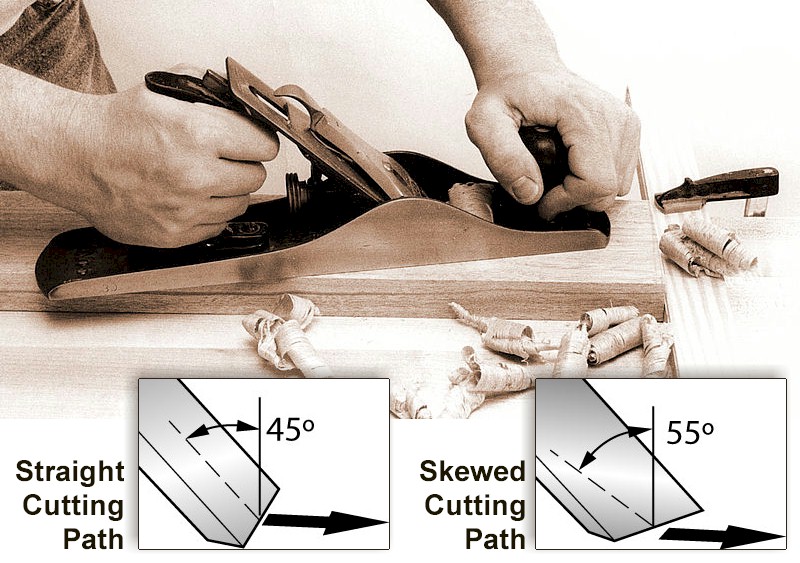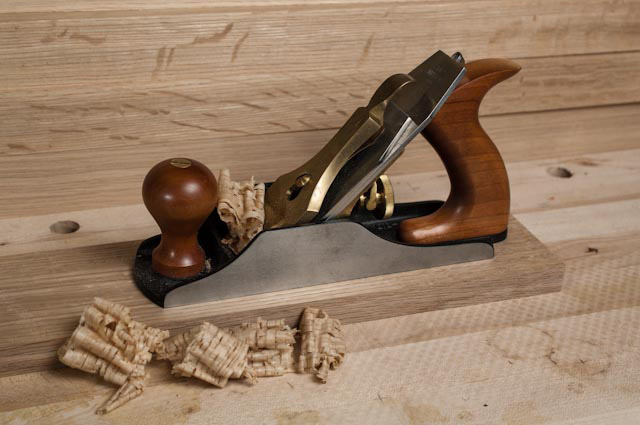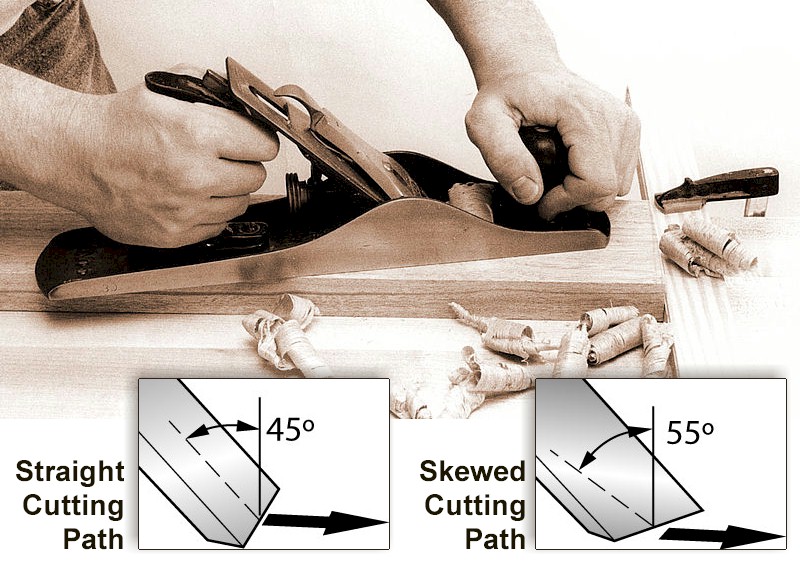If you’ve ever wondered how well hand planers work, you’ve come to the right place! Hand planers are versatile tools that can smooth rough surfaces, shape wood, and trim edges with precision. In this article, we’ll explore the ins and outs of hand planers, and discover just how effective they can be.
Hand planers are an essential tool for both professional woodworkers and DIY enthusiasts. With their sharp blades and ergonomic design, hand planers allow you to effortlessly shave off thin layers of wood, creating smooth and even surfaces. Whether you’re working on a small craft project or tackling a larger woodworking venture, hand planers can be a game-changer.
But how well do hand planers really work? Well, the answer depends on a few factors, such as the quality of the tool and your skill level. With the right technique and a well-maintained hand planer, you’ll be amazed at the precision and control you can achieve. So, let’s dive deeper into the world of hand planers and discover the secrets behind their impressive performance.
In this article, we’ll explore the different types of hand planers, their uses, and provide some handy tips to help you get the most out of your tool. Whether you’re a seasoned woodworker or just starting your woodworking journey, understanding how well hand planers work is key to achieving professional results. So, let’s roll up our sleeves and delve into the wonderful world of hand planers!

How Well Do Hand Planers Work? A Comprehensive Guide
Hand planers are essential tools for woodworking enthusiasts, but how well do they actually work? In this comprehensive guide, we will delve into the functionality, benefits, and tips for using hand planers effectively. Whether you’re a novice woodworker or a seasoned pro, this article will provide you with the information you need to understand and harness the power of hand planers.
The Basics of Hand Planers
1. Understanding Hand Planers
Hand planers are handheld tools used to smooth and shape wood surfaces. They consist of a cutting blade, typically made of high-speed steel or carbide, mounted in a metal body. The blade is adjusted to protrude from the sole plate, allowing it to shave thin layers of wood with each pass. Hand planers are versatile tools that can be used for a variety of woodworking tasks, such as removing rough surfaces, flattening boards, and creating chamfers and bevels.
2. Types of Hand Planers
There are several types of hand planers available, each designed for specific woodworking tasks. Some common types include bench planes, block planes, and jack planes. Bench planes are larger and used for flattening and smoothing large surfaces, while block planes are smaller and used for finer, more precise work. Jack planes are versatile and can handle a range of tasks. Additionally, there are specialty hand planes designed for specific purposes, such as rabbet planes for creating recesses and shoulder planes for refining joints.
3. How Hand Planers Work
Hand planers rely on a combination of blade sharpness, proper adjustment, and skillful technique to achieve optimal results. The blade should be sharp and properly aligned with the sole plate to ensure clean cuts and prevent tearing or splintering of the wood. By applying firm and even pressure, the user pushes the hand planer along the surface of the wood, gradually shaving off thin layers. The direction of the grain and the angle at which the hand planer is held also play a crucial role in achieving the desired outcome.
The Benefits of Hand Planers
1. Versatility
One of the key benefits of hand planers is their versatility. These tools can tackle a wide range of woodworking tasks and are suitable for both rough shaping and fine finishing. From flattening uneven boards to creating decorative edges, hand planers are indispensable for any woodworking project.
2. Portability
Unlike larger power tools, hand planers are compact and portable. They can be easily carried to different job sites, making them ideal for carpenters and woodworkers who need to work on-location or in confined spaces. Their handheld design also provides more control and precision compared to bulkier machines.
3. Cost-Effective
Hand planers are relatively affordable compared to power tools, making them an attractive option for those on a budget. While power planers may offer convenience and speed, hand planers provide a cost-effective alternative without compromising on quality. They are a worthwhile investment for both professionals and hobbyists.
Tips for Using Hand Planers
1. Choose the Right Hand Planer
With various types of hand planers available, it’s essential to choose the right one for the task at hand. Consider the size, blade width, and adjustability when selecting a hand planer. For smaller projects or intricate work, a block plane might be the ideal choice, while larger surfaces may require a bench plane.
2. Sharpen Blades Regularly
A sharp blade is crucial for achieving clean and precise cuts. Regularly sharpen your hand planer blades to ensure optimal performance. Sharpening stones, honing guides, and other sharpening tools can help maintain the sharpness of the blade.
3. Practice Proper Technique
Using a hand planer requires practice and mastering the proper technique. Start with scrap wood to familiarize yourself with the tool and experiment with different angles and pressure. Remember to follow the direction of the wood grain and make steady, consistent passes for best results.
Hand Planers vs. Power Planers: Which is Right for You?
Hand planers and power planers serve the same purpose but differ in terms of operation and convenience. Let’s compare the two:
| Hand Planers | Power Planers |
|---|---|
| Requires manual effort | Motorized for faster operation |
| Portable and easy to maneuver | Heavier and less maneuverable |
| Offers more control and precision | Provides speed and efficiency |
| Cost-effective | Higher upfront cost |
Ultimately, the choice between a hand planer and a power planer depends on personal preference, the scale of your projects, and your budget. Hand planers are great for smaller tasks that require precision, while power planers are better suited for larger projects and those that demand speed.
Common Uses for Hand Planers
1. Smoothing Rough Surfaces
When working with rough or uneven wood surfaces, hand planers can quickly and efficiently smooth them out. By removing thin layers of wood, hand planers create a level and refined finish.
2. Squaring and Straightening Edges
Hand planers excel at squaring and straightening edges, especially when joining boards together. They can remove irregularities and ensure a precise fit for seamless connections.
3. Chamfering and Beveling
Hand planers are excellent tools for creating chamfers, bevels, and angled cuts. These decorative edge treatments add character and style to woodworking projects.
Caring for Your Hand Planer
1. Clean the Blade and Body
Regularly clean the blade and body of your hand planer to remove debris and prevent rust. A clean tool will perform better and last longer.
2. Store Properly
Keep your hand planer in a dry and protected space when not in use. This will prevent moisture damage and maintain the sharpness of the blade.
3. Sharpen and Adjust as Needed
Periodically check the blade sharpness and adjust the blade protrusion to ensure optimal performance. A well-maintained hand planer will provide consistent results.
Conclusion
Hand planers are highly effective tools for shaping, smoothing, and refining wood surfaces. Their versatility, portability, and cost-effectiveness make them a valuable addition to any woodworking toolkit. By choosing the right hand planer, sharpening the blade regularly, and practicing proper technique, you can achieve exceptional results in your woodworking projects. Whether you’re a professional or a hobbyist, mastering the use of hand planers can greatly enhance your woodworking skills.
Key Takeaways: How Well Do Hand Planers Work?
- Hand planers are versatile tools used for shaping and smoothing wood.
- They work by removing thin layers of material, allowing for precise control and fine finishing.
- Hand planers can handle various woodworking tasks, from trimming doors to creating chamfers.
- They require manual effort and skill to operate effectively.
- Regular maintenance, such as sharpening the blade, is essential for optimal performance.
Frequently Asked Questions
Are you curious about how hand planers work? Look no further! We’ve put together some commonly asked questions to help you understand the ins and outs of these handy tools.
1. How do hand planers work?
Hand planers are versatile tools used for shaping and smoothing wood surfaces. They consist of a sharp blade mounted on an adjustable base. To use a hand planer, you simply position the tool on the wood surface and push it forward. The blade shaves off thin layers of wood, gradually shaping the surface according to your desired result. The adjustable base allows you to control the thickness of the shavings, making it easier to achieve precise and smooth finishes.
Hand planers are often used for tasks such as leveling uneven surfaces, beveling edges, chamfering, and reducing thickness. They can be particularly useful for woodworking projects or when renovating or repairing wooden furniture. With proper technique and practice, hand planers can help you achieve professional-looking results.
2. Can hand planers be used on different types of wood?
Yes, hand planers can be used on a variety of wood types. Whether you’re working with softwoods like pine or hardwoods like oak, hand planers are designed to handle different wood densities. However, it’s important to consider the condition of the wood. For example, if you’re planing a piece of wood with lots of knots or irregular patterns, it may result in tear-out or chipping. In such cases, it’s recommended to take extra precautions or opt for alternative tools.
Before you begin planing, it’s also a good idea to check the tool’s blade sharpness. Dull blades may cause tear-out or leave uneven surfaces. Keeping the blade sharp will improve the overall performance and efficiency of the hand planer.
3. Are hand planers suitable for beginners?
Hand planers can be used by beginners, but like any other tool, they require some practice and technique to achieve the desired results. If you’re new to using hand planers, it’s recommended to start with smaller or simpler projects to develop your skills. Learning how to properly hold and position the tool, adjust the blade depth, and control the planer’s movement are crucial aspects to master. The goal is to achieve smooth and even shavings without damaging the wood surface.
By starting with small projects and gradually working your way up to larger ones, you’ll gain confidence and improve your planing skills over time. Don’t be discouraged if it takes a few tries to get it right – practice makes perfect!
4. Do hand planers require maintenance?
Yes, hand planers require regular maintenance to ensure their optimal performance. One of the key maintenance tasks is sharpening the blade. Sharp blades produce clean and precise cuts, while dull blades can lead to tear-out and rough surfaces. There are various sharpening techniques and tools available, such as honing guides and sharpening stones, to help you maintain a sharp edge on your hand planer blades.
Additionally, it’s important to keep the tool clean and free from debris. Wood shavings and dust can accumulate inside the planer, affecting its efficiency. Cleaning the tool after each use will help prolong its lifespan and prevent any performance issues. Lubricating the moving parts can also contribute to smoother operation and prevent rusting.
5. What safety precautions should I take when using a hand planer?
Safety should always be a top priority when using any tool, and hand planers are no exception. Here are some important safety precautions to keep in mind:
First, ensure your work area is well-lit and clear of any clutter or obstacles. This will help prevent accidents and provide you with a comfortable and safe working environment. When using a hand planer, always wear appropriate safety gear, including safety glasses or goggles to protect your eyes from flying wood shavings and gloves to protect your hands.
It’s also important to use the tool in the correct direction. Typically, hand planers are pushed forward along the wood grain to achieve optimal results. Pushing against the grain can result in tear-out or chipping. Lastly, be mindful of your fingers and keep them away from the blade area to avoid injuries. Remember, practice safe woodworking habits and take the necessary precautions to enjoy a rewarding and injury-free woodworking experience.

Summary
Hand planers can be a handy tool for shaping and smoothing wood surfaces. They are easy to use and give you control over the amount of material you remove. However, hand planers require some skill to achieve the desired results. It’s important to maintain a consistent angle and avoid taking off too much material at once. With practice and patience, hand planers can be a valuable addition to your woodworking toolkit.
Overall, hand planers work well for smaller woodworking projects and can be a great alternative to power tools. They allow you to work on intricate details and achieve a smooth finish. While they may take some time to master, the effort is worth it for the control and precision they offer. So, give hand planers a try and see how they can enhance your woodworking projects!
